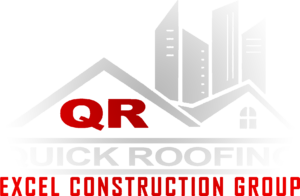FLAT ROOFING
ECG Flat Roofing – Are you in need of flat roofing services for your commercial or residential property? Look no further than our team of licensed and certified experts! At our company, we take pride in delivering top-quality flat roofing solutions for our customers. Whether you’re looking to install, repair, or maintain a flat roofing system for your commercial or residential property, our team of certified and licensed experts can take care of it all. With decades of combined experience in the industry, we have what it takes to ensure that your property gets the quality protection it deserves.
WHY CHOOSE ECG?
✓ Our Guarantee : We stand behind our workmanship and materials, offering a comprehensive guarantee for all of our services.
✓ Licensed & Certified : We are certified and licensed by leading manufacturers in the industry, allowing us to offer high-quality roofing materials and services.
✓ Free Condition Reports : We offer free condition reports to help you assess the state of your roofing system and determine the best course of action to take.
✓ Free Estimates : We also provide free estimates for all of our services so you can have a clear idea of the cost before making any decisions.
WHY FLAT ROOFING?
– Certification by the Manufacturer : When choosing a flat roofing system, it is important to choose a manufacturer that is certified and has experience in the industry. This can ensure that the system is properly installed and will function correctly.
– Climate & Usage Requirements : consider factors such as the climate in which the building is located, as well as the intended use of the building. Different materials and systems may be more appropriate for certain conditions or usage requirements.
– Maintenance & Repair Requirements : Another important consideration is the maintenance and repair requirements of the chosen system. Some flat roofing systems may require more frequent inspections and repairs, while others may be more durable and require less maintenance.
– Cost-Effectiveness Long-Term : consider the cost-effectiveness of the chosen system. While some systems may initially have a higher cost of installation, they may result in long-term cost savings through energy efficiency or reduced maintenance and repair requirements. A qualified roofing contractor can provide guidance on selecting the most appropriate flat roofing system for a specific building and its requirements
Modified Bitumen
Modified bitumen is a type of roofing material that is made from asphalt and other materials. It is designed to provide durability and resistance to weathering and other external factors. Modified bitumen is a popular choice for commercial and industrial roofing applications due to its high performance properties. Modified bitumen roofing can be installed using a variety of methods, including torch-applying, self-adhering, hot-mopping, and cold adhesive. The torch-applied method is the most commonly used method and involves heating the material with a propane torch to melt the adhesive and create a secure bond. Self-adhering modified bitumen roofing is pre-manufactured with an adhesive backing and is suitable for low-slope roofs. The hot-mop method involves heating the modified bitumen with a kettle and mopping it onto the roof surface. Finally, a cold adhesive is used to install the roofing material without heat.
MOD-BIT “PROS”
MOD-BIT “CONS”
Modified bitumen roofing can be installed on a variety of buildings, including commercial, industrial, and residential structures. The worksite should be clear of debris and any obstacles that may impede the installation process. Proper safety equipment should be used at all times, including gloves, safety glasses, and hard hats. The installation time for modified bitumen roofing depends on the size and complexity of the project. Typically, an installation can take anywhere from a few days to a few weeks. The weather conditions can also affect the installation time, as it may not be possible to install the roofing material in extreme weather conditions. To install modified bitumen roofing, it is important to have the necessary tools and equipment, such as a propane torch, kettle, adhesive, and other materials. Additionally, the roofing contractor should have a strong understanding of the installation process and the safety measures that must be taken during the installation. Finally, proper permits and inspections may be required for the installation of modified bitumen roofing.
TPO ROOFING
TPO (Thermoplastic Olefin) is a popular, long-lasting and durable roofing material that’s highly resistant to UV radiation, punctures and tears. Proper installation based on the kind of roof structure, its size and slope, as well as budget considerations is key to achieving results that will meet expectations. Installment involves adhesion with specialty adhesive materials in some cases or mechanical attachments such as plates or screws. When using adhesives it’s essential the material be compatible with the TPO membrane being used. Flashings must be installed at the rooftops perimeters, penetrations and change in plane areas for barriers against moisture penetration.
Additional requirements for installation include insulation measured up to building standards for energy efficiency purposes and specialized tools tailored for work completion efficiently. The achievements are worth noting as optimal characteristics can be obtained when needed conditions are met during TPO roofing installment such as cleanliness, dryness and preparation elements specified above.
TPO “PROS”
TPO “CONS”
TPO roofing is a cost-effective and efficient option for residential and commercial properties. Its durability, energy efficiency, and easy installation make it a popular choice for business & property owners. While TPO roofs offer many benefits, it’s important to carefully consider climate conditions and find a qualified installer to ensure the best possible results.
PVC ROOFING
PVC (Polyvinyl Chloride) flat roofing is an ideal choice of roofing material for both residential and commercial properties, as it provides high durability, resistance against weather elements, UV radiation, and chemical products. In addition, PVC roofing systems are relatively simple to install, require minimal maintenance and repairs, and have a long lifespan of up to 30 years. The two main methods for installing PVC flat roofing systems are Mechanically Attached – with mechanical fasteners such as screws or nails – and Adhered – with adhesive materials. Depending on various factors such as the size of the roof or weather conditions, installation can take from 2-4 days for a residential property or 4-6 days for a commercial property.
PVC “PROS”
PVC “CONS”
PVC does have certain requirements that need to be met prior to installation including permits and regulations compliant with local building codes along with roof preparation by an experienced contractor certified in PVC flat roofing installation. To ensure customers’ satisfaction in their PVC flat roofing system purchase decision it is also important to choose a manufacturer offering warranties on their products which will cover potential defects or damages without additional costs.
COMPOSITE ROOFING
Composite roofing is a type of roofing material that is made up of multiple layers of different materials. The layers typically include a base layer made of felt or fiberglass, a layer of adhesive, and a top layer made of various materials such as asphalt, rubber, or PVC. Composite roofing materials may also include other materials, such as recycled rubber, to provide additional durability or environmental benefits. Composite roofing is known for its durability, weather resistance, and fire resistance. It is also popular for its affordability and a wide range of styles and color options.
We are experienced and certified contractors when it comes to choosing the best flat-roof system for their building. Our professionals can assess the needs of your structure, recommend installation and maintenance practices, and help you maximize your investment by comparing prices across multiple sources. With this approach, property owners can make an informed decision to ensure the long-term performance of their roofing system. Don’t settle for a subpar roofing system that fails to protect your property. Choose us for reliable, efficient, and effective flat roofing solutions. Contact us today to schedule your free estimate! Choose ECG for your flat roofing needs – we are experienced and certified experts in our field. Contact us today!
EPDM ROOFING
EPDM (Ethylene Propylene Diene Monomer) is a synthetic rubber roofing membrane that is commonly used in flat and low-sloping roofs. It is highly durable and long-lasting, making it a popular choice for both residential and commercial buildings. There are two main methods of installing EPDM roofing – fully adhered and mechanically attached. In a fully adhered installation, the EPDM membrane is glued directly to the roofing substrate using an adhesive. In a mechanically attached installation, the EPDM membrane is secured to the substrate using screws and plates. This method is typically used for larger roofs that require greater stability. Before starting any EPDM installation, the work site must be properly prepared. This involves ensuring that the roof is clean, dry, and free from any debris. Any repairs or modifications to the roof should be completed prior to the installation of the EPDM membrane.
EPDM “PROS”
EPDM “CONS”
The time and requirements for an EPDM installation depend on a number of factors, including the size of the roof, the installation method, and the skill level of the contractor. A typical installation can take anywhere from a few days to a week, depending on the complexity of the project. Prior to installation, the contractor should provide a detailed estimate outlining the time and materials required for the job. EPDM roofing requires specialized tools and equipment, including a heat gun, a seam roller, and a seaming kit. It is important to hire an experienced and qualified roofing professional to ensure that the installation is done correctly and that the roof is watertight. EPDM roofing is a highly durable and long-lasting option for flat and low-sloping roofs. Proper installation methods, worksite preparation, and the use of specialized tools and equipment are essential for a successful installation.
BENEFITS OF A FLAT ROOF?
Space
Utilization
Cost Effective
Easy
Maintenance
Energy
Efficiency
Minimalistic
Design
1. Cost-Effective : Flat roofs are more affordable to install and maintain than sloping roofs due to their simple design and ease of access.
2. Space Utilization : Flat roofs provide additional outdoor living space for gardening, relaxation, and entertainment purposes.
3. Easy Installation : Flat roofs can be installed quickly and easily, without any complicated roof framing or support structures.
4. Energy Efficiency : Flat roofing systems can be easily fitted with insulation, reducing energy costs and enhancing energy efficiency.
5. Easy Maintenance : Flat roofs are easier to maintain and repair because they are easy to access.
6. Durability : Flat roofing systems can last for many decades, providing superior durability and weather protection.
7. Flexibility in Design : Flat roofs can be designed to suit any architectural style or building structure.
8. Aesthetically Pleasing : Flat roof designs offer a modern, sleek appearance that can enhance a building’s overall aesthetic appeal.
9. Minimalistic Design : Flat roofing systems typically require less material and create less waste, making them a more sustainable option.
10. Versatility : Flat roofing systems can be used on both residential and commercial buildings, making them a versatile choice for any project.
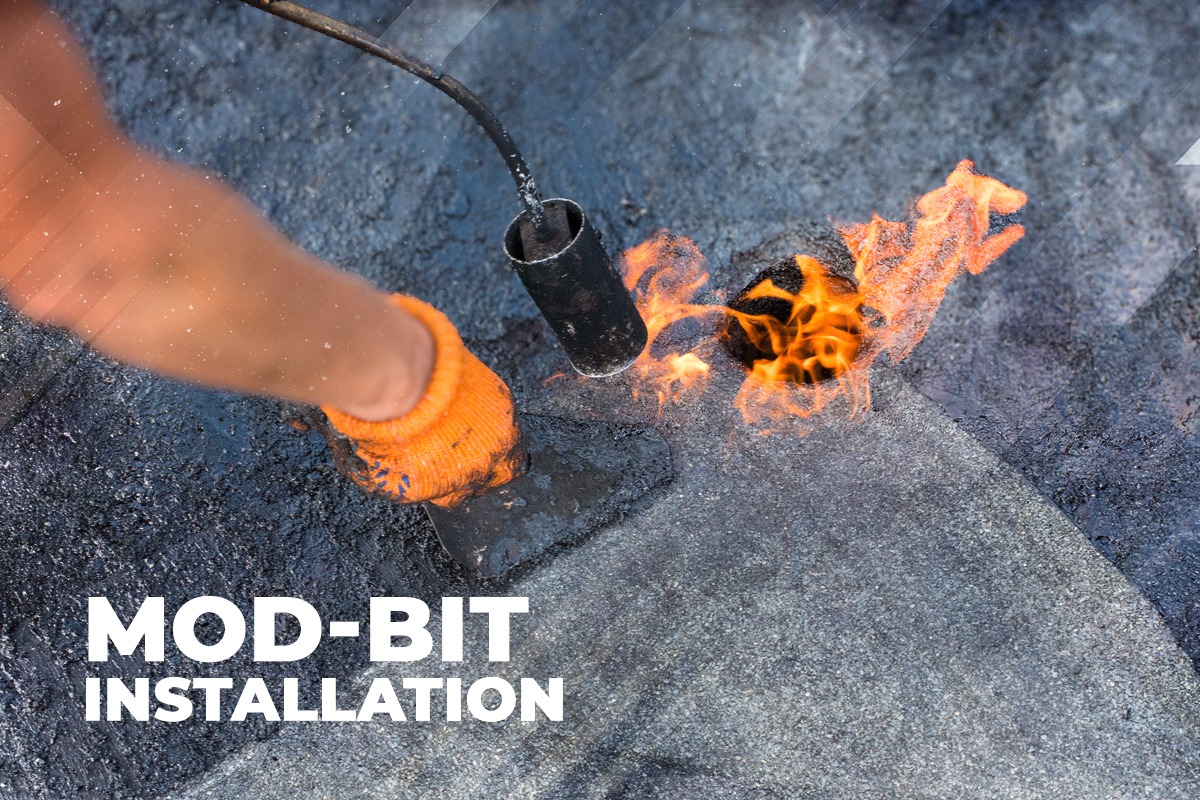
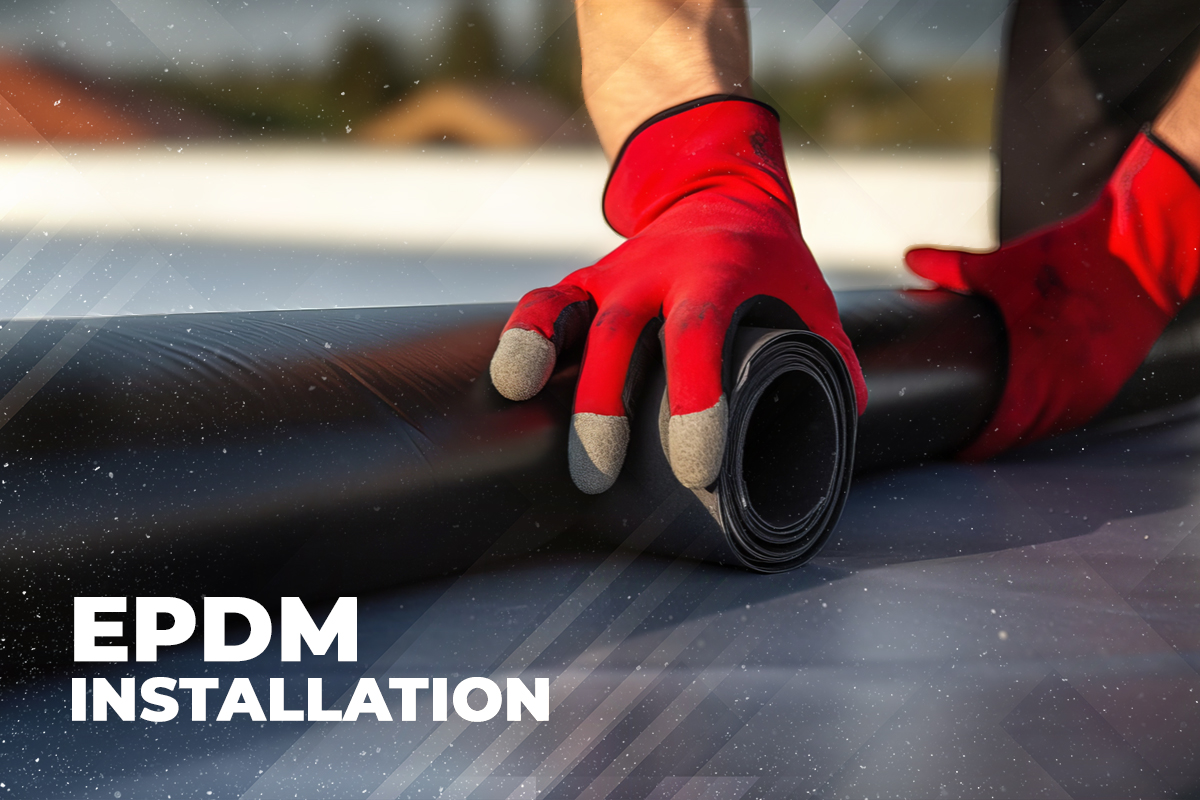
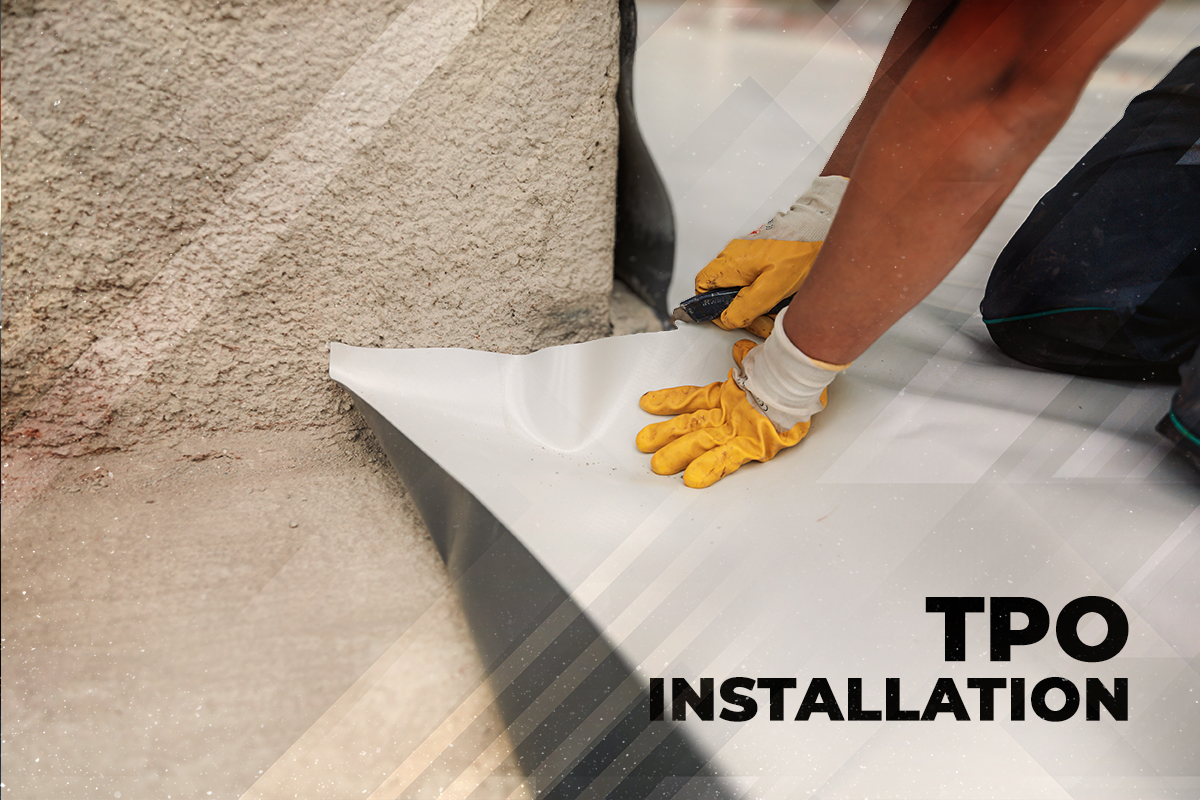
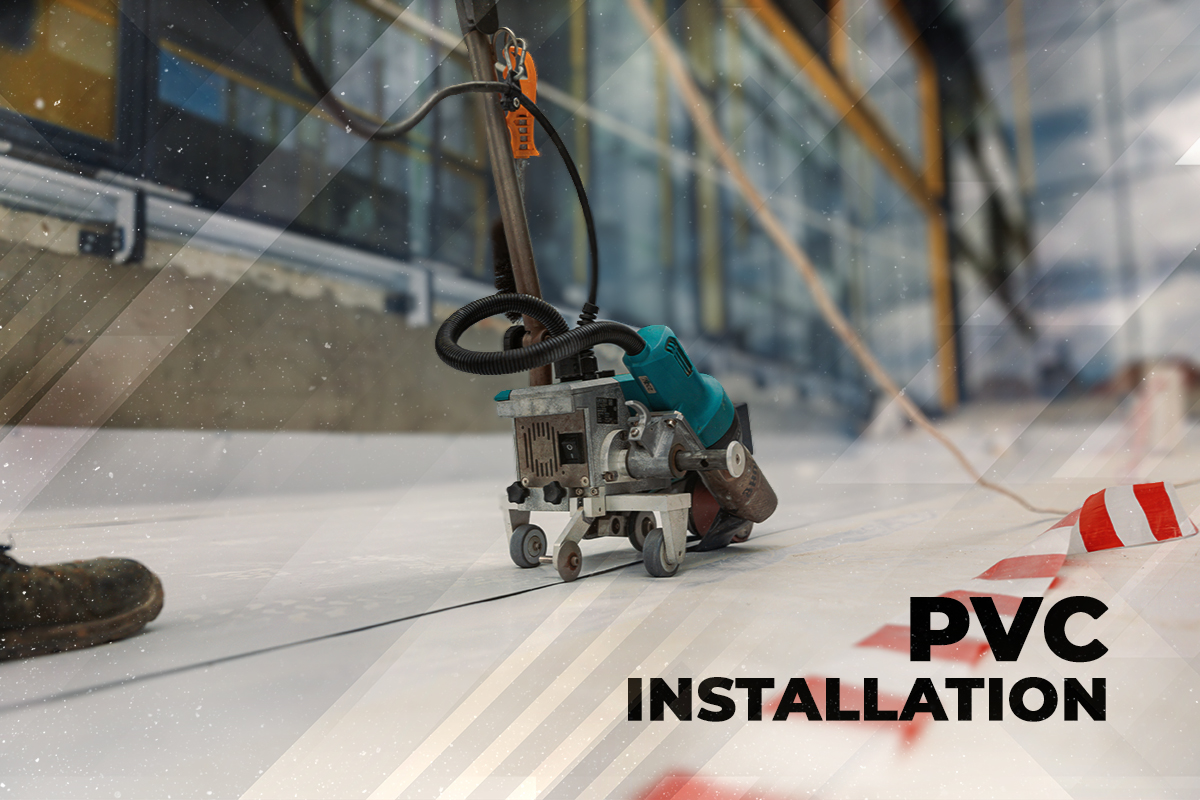
FLAT ROOFING CONTENTS
FLAT ROOFING
ECG Flat Roofing – Are you in need of flat roofing services for your commercial or residential property? Look no further than our team of licensed and certified experts! At our company, we take pride in delivering top-quality flat roofing solutions for our customers. Whether you’re looking to install, repair, or maintain a flat roofing system for your commercial or residential property, our team of certified and licensed experts can take care of it all. With decades of combined experience in the industry, we have what it takes to ensure that your property gets the quality protection it deserves.
WHY FLAT ROOFING?
– Certification by the Manufacturer : When choosing a flat roofing system, it is important to choose a manufacturer that is certified and has experience in the industry. This can ensure that the system is properly installed and will function correctly.
– Climate & Usage Requirements : consider factors such as the climate in which the building is located, as well as the intended use of the building. Different materials and systems may be more appropriate for certain conditions or usage requirements.
– Maintenance & Repair Requirements : Another important consideration is the maintenance and repair requirements of the chosen system. Some flat roofing systems may require more frequent inspections and repairs, while others may be more durable and require less maintenance.
– Cost-Effectiveness Long-Term : consider the cost-effectiveness of the chosen system. While some systems may initially have a higher cost of installation, they may result in long-term cost savings through energy efficiency or reduced maintenance and repair requirements. A qualified roofing contractor can provide guidance on selecting the most appropriate flat roofing system for a specific building and its requirements.
Don’t settle for a subpar roofing system that fails to protect your property. Choose us for reliable, efficient, and effective flat roofing solutions. Contact us today to schedule your free estimate!
Modified Bitumen
Modified bitumen is a type of roofing material that is made from asphalt and other materials. It is designed to provide durability and resistance to weathering and other external factors. Modified bitumen is a popular choice for commercial and industrial roofing applications due to its high performance properties. Modified bitumen roofing can be installed using a variety of methods, including torch-applying, self-adhering, hot-mopping, and cold adhesive. The torch-applied method is the most commonly used method and involves heating the material with a propane torch to melt the adhesive and create a secure bond. Self-adhering modified bitumen roofing is pre-manufactured with an adhesive backing and is suitable for low-slope roofs. The hot-mop method involves heating the modified bitumen with a kettle and mopping it onto the roof surface. Finally, a cold adhesive is used to install the roofing material without heat.
MOD-BIT “PROS”
MOD-BIT “CONS”
Modified bitumen roofing can be installed on a variety of buildings, including commercial, industrial, and residential structures. The worksite should be clear of debris and any obstacles that may impede the installation process. Proper safety equipment should be used at all times, including gloves, safety glasses, and hard hats. The installation time for modified bitumen roofing depends on the size and complexity of the project. Typically, an installation can take anywhere from a few days to a few weeks. The weather conditions can also affect the installation time, as it may not be possible to install the roofing material in extreme weather conditions. To install modified bitumen roofing, it is important to have the necessary tools and equipment, such as a propane torch, kettle, adhesive, and other materials. Additionally, the roofing contractor should have a strong understanding of the installation process and the safety measures that must be taken during the installation. Finally, proper permits and inspections may be required for the installation of modified bitumen roofing.
EPDM ROOFING
EPDM (Ethylene Propylene Diene Monomer) is a synthetic rubber roofing membrane that is commonly used in flat and low-sloping roofs. It is highly durable and long-lasting, making it a popular choice for both residential and commercial buildings. There are two main methods of installing EPDM roofing – fully adhered and mechanically attached. In a fully adhered installation, the EPDM membrane is glued directly to the roofing substrate using an adhesive. In a mechanically attached installation, the EPDM membrane is secured to the substrate using screws and plates. This method is typically used for larger roofs that require greater stability. Before starting any EPDM installation, the work site must be properly prepared. This involves ensuring that the roof is clean, dry, and free from any debris. Any repairs or modifications to the roof should be completed prior to the installation of the EPDM membrane.
EPDM “PROS”
EPDM “CONS”
The time and requirements for an EPDM installation depend on a number of factors, including the size of the roof, the installation method, and the skill level of the contractor. A typical installation can take anywhere from a few days to a week, depending on the complexity of the project. Prior to installation, the contractor should provide a detailed estimate outlining the time and materials required for the job. EPDM roofing requires specialized tools and equipment, including a heat gun, a seam roller, and a seaming kit. It is important to hire an experienced and qualified roofing professional to ensure that the installation is done correctly and that the roof is watertight. EPDM roofing is a highly durable and long-lasting option for flat and low-sloping roofs. Proper installation methods, worksite preparation, and the use of specialized tools and equipment are essential for a successful installation.
TPO ROOFING
TPO (Thermoplastic Olefin) is a popular, long-lasting and durable roofing material that’s highly resistant to UV radiation, punctures and tears. Proper installation based on the kind of roof structure, its size and slope, as well as budget considerations is key to achieving results that will meet expectations. Installment involves adhesion with specialty adhesive materials in some cases or mechanical attachments such as plates or screws. When using adhesives it’s essential the material be compatible with the TPO membrane being used. Flashings must be installed at the rooftops perimeters, penetrations and change in plane areas for barriers against moisture penetration.
Additional requirements for installation include insulation measured up to building standards for energy efficiency purposes and specialized tools tailored for work completion efficiently. The achievements are worth noting as optimal characteristics can be obtained when needed conditions are met during TPO roofing installment such as cleanliness, dryness and preparation elements specified above.
TPO “PROS”
TPO “CONS”
TPO roofing is a cost-effective and efficient option for residential and commercial properties. Its durability, energy efficiency, and easy installation make it a popular choice for business & property owners. While TPO roofs offer many benefits, it’s important to carefully consider climate conditions and find a qualified installer to ensure the best possible results.
PVC ROOFING
PVC (Polyvinyl Chloride) flat roofing is an ideal choice of roofing material for both residential and commercial properties, as it provides high durability, resistance against weather elements, UV radiation, and chemical products. In addition, PVC roofing systems are relatively simple to install, require minimal maintenance and repairs, and have a long lifespan of up to 30 years. The two main methods for installing PVC flat roofing systems are Mechanically Attached – with mechanical fasteners such as screws or nails – and Adhered – with adhesive materials. Depending on various factors such as the size of the roof or weather conditions, installation can take from 2-4 days for a residential property or 4-6 days for a commercial property.
PVC “PROS”
PVC “CONS”
PVC does have certain requirements that need to be met prior to installation including permits and regulations compliant with local building codes along with roof preparation by an experienced contractor certified in PVC flat roofing installation. To ensure customers’ satisfaction in their PVC flat roofing system purchase decision it is also important to choose a manufacturer offering warranties on their products which will cover potential defects or damages without additional costs.
COMPOSITE ROOFING
Composite roofing is a type of roofing material that is made up of multiple layers of different materials. The layers typically include a base layer made of felt or fiberglass, a layer of adhesive, and a top layer made of various materials such as asphalt, rubber, or PVC. Composite roofing materials may also include other materials, such as recycled rubber, to provide additional durability or environmental benefits. Composite roofing is known for its durability, weather resistance, and fire resistance. It is also popular for its affordability and a wide range of styles and color options.
WHY CHOOSE ECG?
✓ Our Guarantee : We stand behind our workmanship and materials, offering a comprehensive guarantee for all of our services.
✓ Licensed & Certified : We are certified and licensed by leading manufacturers in the industry, allowing us to offer high-quality roofing materials and services.
✓ Free Condition Reports : We offer free condition reports to help you assess the state of your roofing system and determine the best course of action to take.
✓ Free Estimates : We also provide free estimates for all of our services so you can have a clear idea of the cost before making any decisions.
BENEFITS OF A FLAT ROOF?
1. Cost-Effective : Flat roofs are more affordable to install and maintain than sloping roofs due to their simple design and ease of access.
2. Space Utilization : Flat roofs provide additional outdoor living space for gardening, relaxation, and entertainment purposes.
3. Easy Installation : Flat roofs can be installed quickly and easily, without any complicated roof framing or support structures.
4. Energy Efficiency : Flat roofing systems can be easily fitted with insulation, reducing energy costs and enhancing energy efficiency.
5. Easy Maintenance : Flat roofs are easier to maintain and repair because they are easy to access.
6. Durability : Flat roofing systems can last for many decades, providing superior durability and weather protection.
7. Flexibility in Design : Flat roofs can be designed to suit any architectural style or building structure.
8. Aesthetically Pleasing : Flat roof designs offer a modern, sleek appearance that can enhance a building’s overall aesthetic appeal.
9. Minimalistic Design : Flat roofing systems typically require less material and create less waste, making them a more sustainable option.
10. Versatility : Flat roofing systems can be used on both residential and commercial buildings, making them a versatile choice for any project.
We are experienced and certified contractors when it comes to choosing the best flat-roof system for their building. Our professionals can assess the needs of your structure, recommend installation and maintenance practices, and help you maximize your investment by comparing prices across multiple sources. With this approach, property owners can make an informed decision to ensure the long-term performance of their roofing system. Choose ECG for your flat roofing needs – we are experienced and certified experts in our field. Contact us today!
SCHEDULE A FREE INSPECTION
Schedule a Free Inspection

General Contracting Services - Est.1996
Mon – Fri
9am : 5pm
Saturday
10am : 2pm
Sunday
Closed
(833) 324-2699
CONTACT INFORMATION
ECG Corporate Location
TEXAS – COLORADO – OKLAHOMA | ➥ SEE ALL DIVISIONS
ECG COMMERCIAL
TEXT “ECGINFO“ TO “21000”
